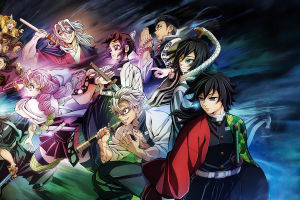Anime is not just entertainment; it's a window into Japan's soul. For fans around the world, it's a way to experience Japanese culture, history, and traditions in a form that's both captivating and accessible.
Whether through Shintoism, Japanese folklore, or even reflections on historical events, anime has a profound connection to the cultural fabric of Japan. Let's take a closer look at how anime often mirrors the essence of Japanese society.
The Role of Shintoism in Anime
One of the most significant aspects of Japanese culture reflected in anime is Shintoism, the indigenous religion of Japan that emphasizes the worship of kami (spirits or gods) found in natural elements, objects, and even abstract concepts. Many anime series incorporate Shinto ideas, such as the belief in spirits living in nature, the importance of rituals, and the interconnectedness of humans with the spiritual world.
We can see the influence of Shintoism in popular anime like Spirited Away by Studio Ghibli. In this film, the protagonist, Chihiro, enters a world where spirits, gods, and other supernatural beings exist. The settings, from the bathhouse to the forest spirits, reflect the naturalistic and animistic elements of Shinto beliefs. The spiritual journey of Chihiro also mirrors the Shinto concept of purification and the necessity of rituals to restore balance.
Another example is Natsume's Book of Friends (Natsume Yūjin-chō), where the main character, Natsume, is able to see and interact with spirits. The anime emphasizes Shinto themes like respect for nature and the spiritual world, as well as the importance of maintaining balance between humans and spirits.
Japanese Folklore in Anime
Japanese folklore is another cornerstone of anime storytelling. The rich collection of mythological creatures, spirits, and deities offers endless inspiration for creating diverse characters and plots. For instance, many anime series and films feature yokai (supernatural beings or monsters) or kami (spirits), blending folklore with fantasy to tell engaging stories.
One of the most famous anime that draws from Japanese folklore is Mononoke. The show's protagonist, the Medicine Seller, travels through the world, confronting various mononoke (spirits or demons) that are based on traditional Japanese mythology. The mononoke are often manifestations of human emotions and societal issues, illustrating how folklore is used to convey deeper meanings in anime.
In InuYasha, the story is set in the Sengoku period and involves characters and themes from Japanese mythology. The titular character, InuYasha, is a half-demon based on traditional mythological creatures, while other characters embody various spirits, gods, and legendary figures from folklore. This combination of folklore and fantasy makes it a unique example of how folklore is woven into anime to create compelling narratives.
Reflecting Japanese Historical Events
Anime also reflects Japan's historical events, giving us a glimpse into the country's past while providing a lens through which we can better understand its cultural evolution. For example, anime set during feudal Japan often incorporates themes of samurai culture, class struggles, and the rise and fall of dynasties. Series like Rurouni Kenshin and Samurai Champloo are great examples, highlighting Japan's Meiji Restoration and the decline of the samurai era.
Grave of the Fireflies is another anime that explores Japan's historical past, particularly during and after World Conflict II. The story follows two children as they try to survive amidst the devastation of conflict. The film portrays the harsh realities of conflict, emphasizing the human cost and emotional toll it had on civilians, especially in Japan. By focusing on this tragic period of Japanese history, the film conveys powerful messages about loss, survival, and the effects of conflict on society.
More recently, anime like Attack on Titan has been interpreted as an allegory of Japanese society dealing with its past, particularly with themes of isolationism, fear of the outside world, and the cost of protecting cultural heritage. While Attack on Titan is set in a fantastical world, the themes and underlying messages are deeply rooted in Japan's historical and societal struggles.
Social Issues in Anime
In addition to traditional culture and history, anime often tackles modern-day social issues facing Japan. For example, themes of mental health, identity, and alienation are explored in shows like Neon Genesis Evangelion. The protagonist, Shinji Ikari, grapples with feelings of isolation, the pressure to live up to expectations, and his struggle with self-worth—issues that resonate deeply with many people today.
Similarly, Your Name touches on the theme of changing societal roles, especially in the context of rural versus urban Japan. The film's exploration of time travel and personal growth is set against a backdrop of contemporary issues, such as the changing nature of Japan's countryside and the pressures facing modern youth.
These shows not only entertain but also provide viewers with thought-provoking insights into Japan's current challenges, making anime a powerful medium for social commentary.
Conclusion: Anime as a Reflection of Japan
Anime is much more than just a form of entertainment. It's a cultural treasure trove that offers us insight into Japan's history, traditions, and societal issues. Whether through the influence of Shintoism, the adaptation of folklore, or the exploration of historical events and modern-day struggles, anime is deeply intertwined with the cultural DNA of Japan.
For fans worldwide, anime offers not only an escape into fantastical worlds but also a chance to engage with and appreciate the rich, diverse cultural heritage of Japan. If we pay close attention, we'll find that every anime we watch is a reflection of Japan's past, present, and future, making it a truly fascinating art form to explore.


